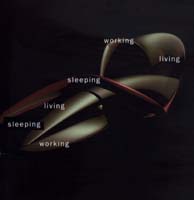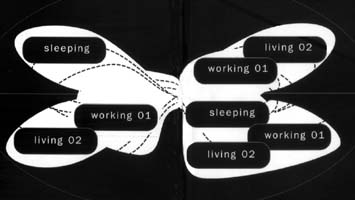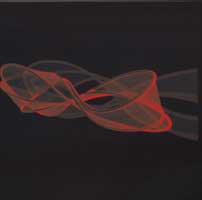Tendencies in contemporary design

Greg Lynn, Blob Models
Post-modernism
emphasized grafting as recombinatorial instrument. Collage became the
model of grafting strategies, but it does not support heterogeneity
anymore. It became the prevailing institutional practice, losing its
contradictory force. It is limited to a particular order of semiotic
recombinations, not being able to be projective.
It is necessary to identifying grafts others than collage, that seek heterogeneity in an intensive cohesion, rather than out of extensive incoherence and contradiction. Exploring the properties of certain monolithic arrangements to enter into multiple relations. A shift way from a concern with semiotics towards a concern with geometry, topology and events.



Ben van Berkel, Möbius House - Diagrams
Two tendencies in contemporary design:
Information: strategy to form a collecting graft, encasing disparate formal and programmatic elements within a neutral situation. Residual and interstitial spaces activated with program, technology and events. It doesn’t matter the esthetic form, but the institutional pattern (program and events). Irrelevance of aesthetic gestures, transformation cannot be accomplished by style changes.
Deformation: strategy that seeks to engender shifting affiliations that resist entering into stable alignments. Grafting abstract typologies that cannot be decomposed in elements to glide. It emphasizes the role of new esthetic form, the visual in the engenderment of new spaces. Contribution in the production of form and space continues to be esthetic. The forms transform their context by incongruous and undisciplined relations.
Deformation is an attempt to relate with contingent influences, effects that flow intrinsically from the design procedures. Secondary contingencies that exist within the site or urban context. Rather than strengthening the dominant modes of the site, affiliations amplify minor organizations that also operate within the site, reconfiguring the context into a new coherence. Intensive coherence generating a smoothing effect in urban scale. Also emphasis in residual and interstitial spaces on primary spaces, but not with programmatic saturation.
Deformation can turn into a single search for contingent influences. But predetermining the contingent influences can simply redefine the dominant influences on the site. The question is on the other contingent effect that can generate. Methods that lead to affiliative relations.
Techniques of design to produce smooth affiliations: to start with complex figures and move them towards not-representational abstraction, preserving its complexity. Methods: camouflage, morphing, splines. Folding: executed on a matrix (urban site) it can generate interstitial spaces. Folding as smooth strategy.